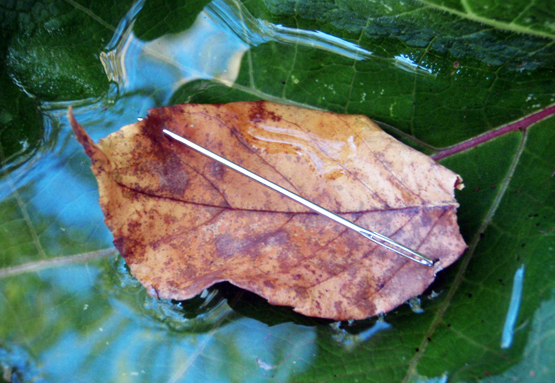We may earn revenue from the products available on this page and participate in affiliate programs. Learn More ›
Being able to improvise a compass can make a huge difference in navigating your way out of an outdoor emergency if you have lost your normal navigation equipment. This is especially important if you are dealing with overcast weather, thick forests, or any other conditions that would eliminate a lot of modern navigational techniques.
Making A Compass Needle
Many steel or iron materials can be turned into a compass needle. Two of the best everyday items are needles and razor blades. Both of these should be standard carry in your first aid or survival kit, and each can serve many purposes. Other metal items like paper clips, small nails, and safety pins can also be used as compass needles.
The metal item becomes a compass needle when it is magnetized and somehow suspended to allow free movement that is not affected by wind or other forces. The earth’s magnetic pull steers the needle into a north-south orientation.
To magnetize the needle or razor blade in the field, you have three options: tapping it, rubbing it, or using a magnet.
The tapping method is done by tapping a steel or iron object against the end of the needle. It works best by sticking the sharp end of the needle into a block of wood and tapping the free end. Tap the needle at least 50 times to magnetize it.
Alternatively, you can magnetize a needle by rubbing it against your hair, some animal fur, or silk. Carefully hold the sharp point of the needle and rub just the eye of the needle 50 to 100 times against the hair, fur, or silk.
Using a magnet is the easiest way to make a compass needle, and it’s especially the best option when you’re using a razor blade. Rub the magnet 20 to 30 times against the needle or blade, going only in one direction.
Suspending The Compass Needle
The classic way to suspend the magnetized piece of metal is to find a way to float it in water. This can be done with a needle by laying the needle on a leaf that can float. If no wind is allowed to hit the leaf, the needle should pull the floating leaf clockwise or counter-clockwise to orient itself north-south.
You can also make an improvised compass in a way that allows the apparatus to be more portable and less vulnerable to the wind. Tie a thin bit of cotton thread to the eye in the center of the razor blade, and hang the blade inside a jar or bottle where the wind will not reach it. Make sure it is hanging freely, and it will line up north-south.
**
Marking The North End Of The Needle**
You’ll have to use something like the sun, moon, stars, geography, etc. to find north, south, east, and west. Once you have that, mark your compass needle with a pen, pencil, marker, or a scratch to show which side is pointing to the north.
